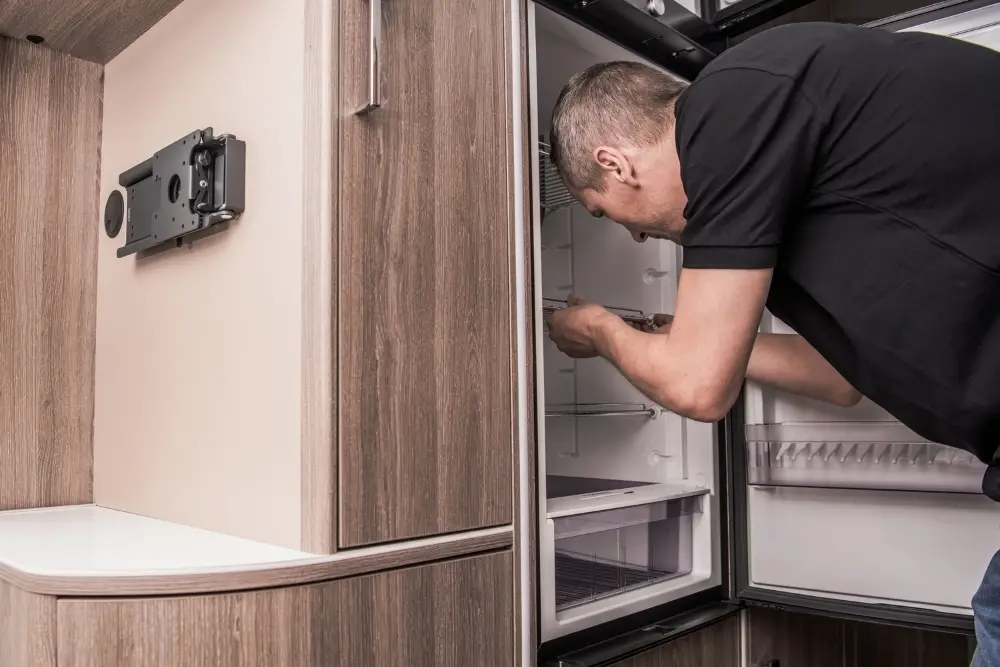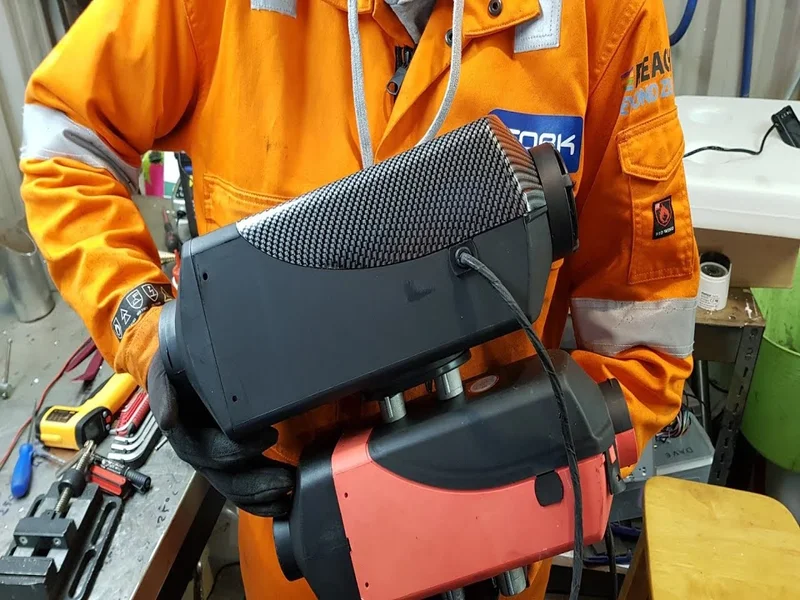The great thing about caravans is that they allow you to hit the road and have an adventure without leaving behind all the home comforts you’ve become accustomed to in your static lodging. One such comfort is refrigerated snacks!
Yep, taking a fridge with you on your expeditions is the best. There’s nothing like helping yourself to a nice cold bottle of water on an absolute scorcher of a day, or fixing yourself a Scooby-Doo style sandwich while your cohabitant drives you to your next natural beauty spot.
However, you may have noticed that fridges designed especially for caravans tend to hold some pretty scary price tags. As such, you wouldn’t be the first to wonder if you can save yourself some money by investing in any old fridge and simply placing it in your caravan.
So, can you use any fridge in a caravan? Well, yes…sort of. It depends on a lot of variables. Allow me to elaborate.

Can You Use A Domestic Fridge In A Caravan?
In certain instances, it is indeed possible to use a domestic fridge in a caravan, but bear in mind that refrigerator manufacturers don’t make specialized caravan units for nothing.
Dimensions And Shape
The first issue you’re likely to run into when attempting to install a domestic fridge in your caravan is finding one that actually fits.
Caravan fridges are almost always slimmer, shorter, and shallower than domestic fridges, so they don’t eat into your living space and create an unnecessary obstacle. Granted, you can get some pretty slim-line domestic fridges, but it can be tricky finding one that’s just right for the space you’re trying to fill.
What’s more, caravan fridges are usually shaped to fit around obstructions such as wheel arches, which are another reason you may have trouble getting a domestic fridge to sit right in your caravan.
Unfortunately, even if you find a fridge with the perfect figure for your home on wheels, your problems are just beginning.
Power Requirements
Domestic fridges have slightly different power requirements to fridges designed for caravans exclusively. The fridge in your home will typically run on 240V mains electricity, while a caravan fridge will run on either gas and/or a 12V vehicle power supply.
This means that you’ll only be able to use your domestic refrigerator when it’s hooked up to the mains on a site. As not all sites offer a mains power supply, you may not get to use your fridge at all.
As soon as you hit the road, that domestic fridge of yours will be completely out of action, so make sure you drink all your white wine and gobble all your snacks before setting off, otherwise, it won’t just be your black water that smells.
Your other option is to invest in and install a power inverter in your caravan, but this can be a costly process and increase your energy consumption by a whopping 15%. Over time, you may even end up spending more on energy than you would have on a caravan fridge.
Running Volume
Let’s say you found an appropriately shaped domestic fridge and installed a power inverter in your caravan to run it, there is one last hurdle to consider…noise.
Now, I know the fridge in your home isn’t exactly screaming (or it shouldn’t anyway), but you will have no doubt picked up on a persisting whirring, the odd whine, and perhaps even a mysterious clinking from time to time. That’s the electric compressor used to keep your snacks and supplies nice and chill.
These little stirrings perhaps don’t seem too distracting in your kitchen at home, but here’s the thing. Your caravan is like a big old sound box, and it will amplify everything.
Unlike in your home, there’s no walking away. The noise is persistent and can get really irritating, especially at night when you’re trying to catch a few winks.
Caravan fridges, on the other hand, do not use compressors to cool their contents. They utilize a near-silent process known as absorption.
Do Caravan Fridges Have To Be Level To Work?
Okay, so we’ve covered the downsides of using a domestic fridge in a caravan, but gas absorption caravan fridges have flaws too. One of which is that they have to be level in order to work efficiently. This can be a real problem if you have a sloped drive or if you’re allotted a pitch with a gradient on a site.
The reason they need to be level is simple…gravity. Absorption refrigerators rely on gravity to draw the ammonia liquid from the condenser fins towards the evaporator coils in the base of the unit.
Not only will tilting inhibit the flow of ammonia, but it also encourages the formation of ammonia crystals, which limit cooling efficiency in the future even when the unit is level.
So, what exactly is considered “level”? Well, you’ll be happy to hear that there is a bit of wiggle room. Give will vary from model to model, but it’s typically something to the tune of 3° side-to-side, and 6° front-to-back.
Does A Caravan Fridge Use A Lot Of Gas?
How much gas your caravan fridge uses depends on its capacity, the ambient temperature, and how cool you like to keep your food and drinks.
Smaller fridges tend to only use between 187–257 grams of gas every 24 hours, but if you’re running them on full power, you can expect those figures to rise a fair amount. A 4.5 kg canister should keep your small fridge going for at least a few weeks.
Larger caravan fridges are a different story. On a warm day, they can use upward of 380 grams of gas over a 24-hour period.
Some large fridges are even more gas-hungry, consuming 480 + grams per day in ambient temperatures of around 24° C. This means that the same 4.5 kg canister will only last for a week and a half at most.








